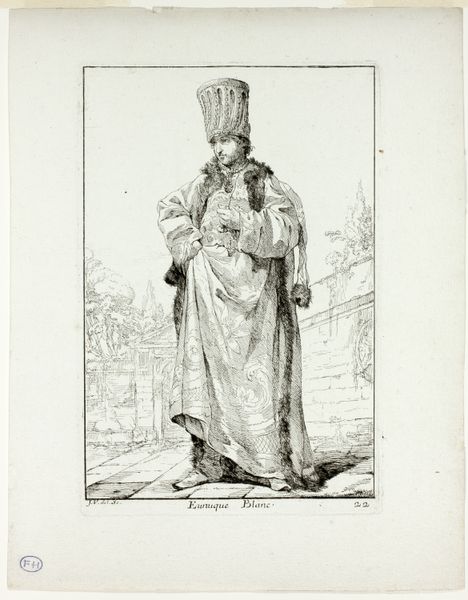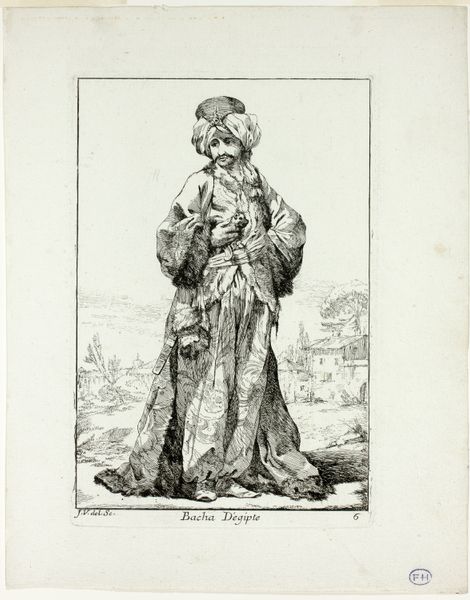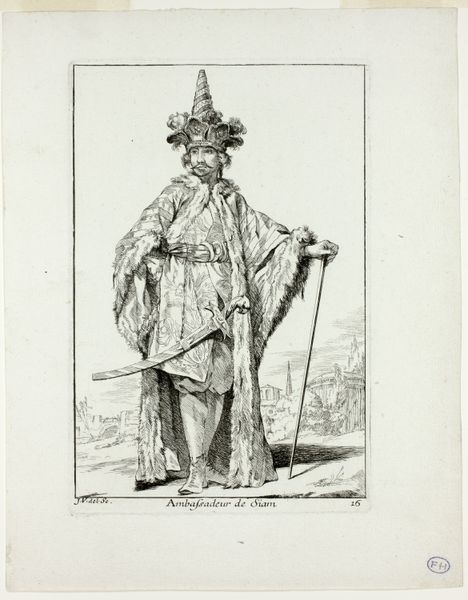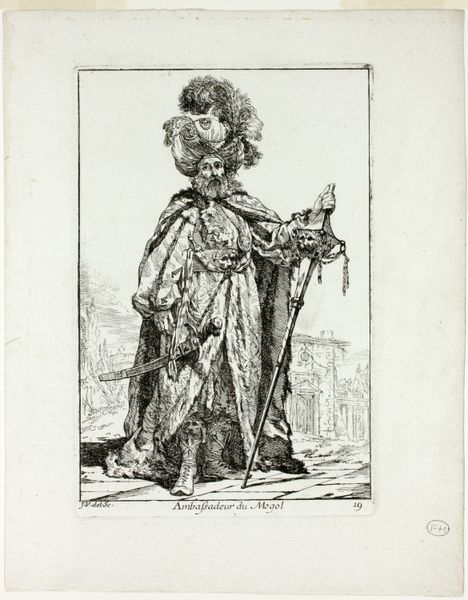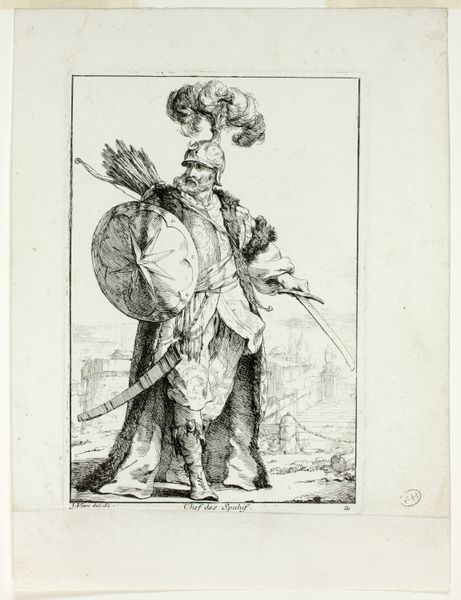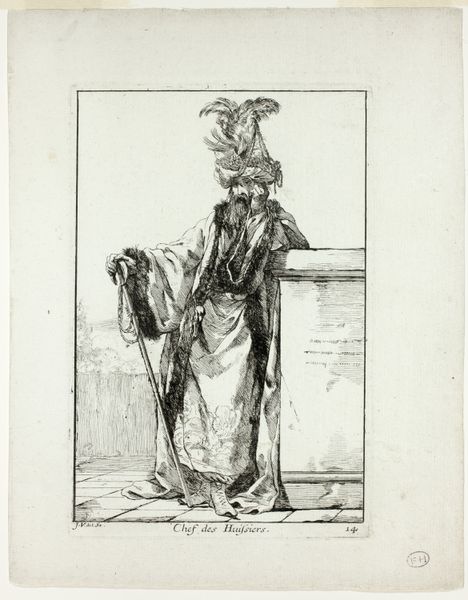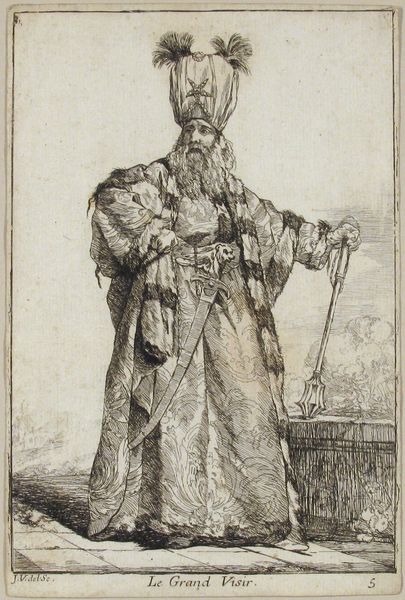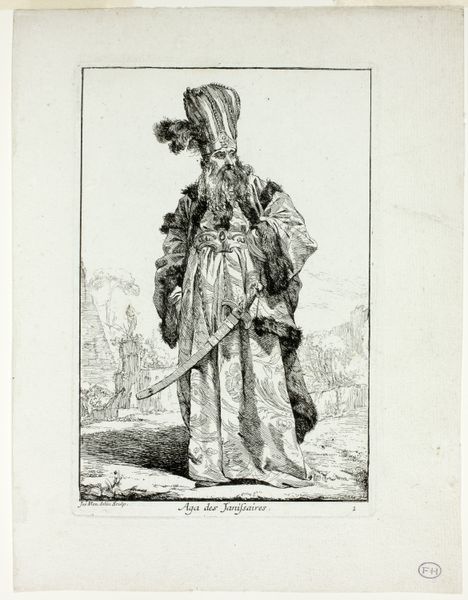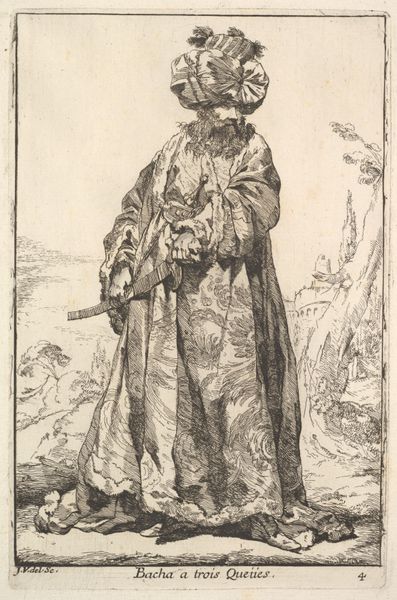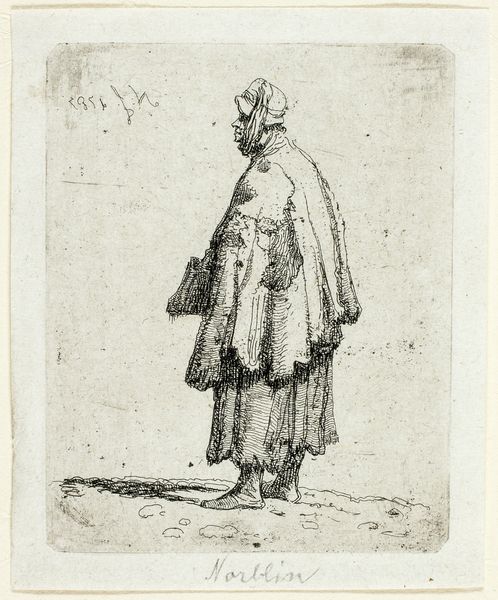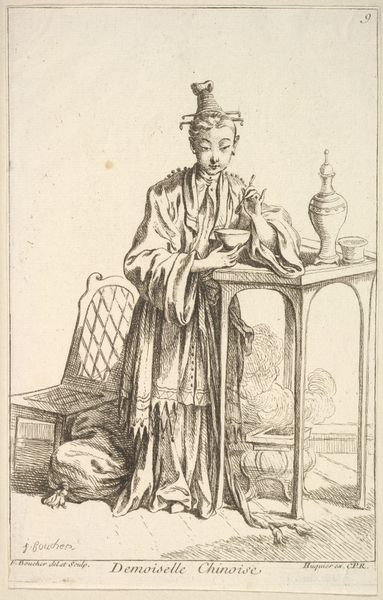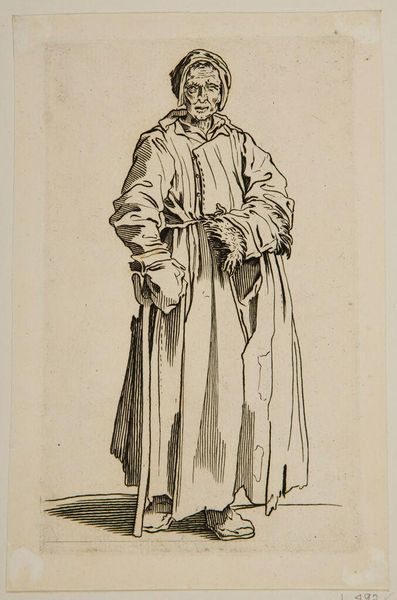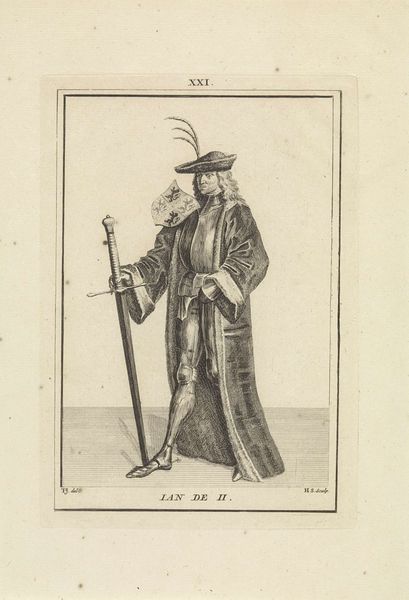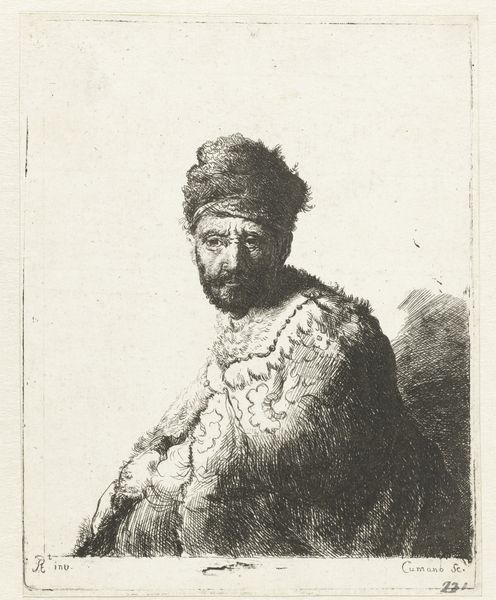
Le Grand Seigneur, plate seventeen from Caravanne du Sultan à la Mecque 1748
0:00
0:00
drawing, print, etching, paper
#
portrait
#
drawing
#
baroque
# print
#
etching
#
paper
#
history-painting
Dimensions: 196 × 131 mm (image); 205 × 135 mm (plate); 263 × 211 mm (sheet)
Copyright: Public Domain
Curator: Before us is "Le Grand Seigneur, plate seventeen from Caravanne du Sultan à la Mecque," an etching on paper by Joseph Marie Vien, created in 1748. Editor: The intricate line work certainly captures a sense of weight and opulence, doesn’t it? Even in monochrome, the texture of the Grand Seigneur’s robes seems almost tangible. Curator: Indeed. Vien's skillful rendering of light and shadow enhances the three-dimensionality of the figure. Consider how the linear precision articulates volume and evokes a powerful symbolic presence. The Grand Seigneur occupies a structured, almost theatrical space. Editor: Yet, beyond that space, it raises questions about artistic production. The print medium would have made it reproducible, for consumption by a specific audience – in this case, Europeans consuming Orientalist fantasies? Also, what paper and ink would have been used and by which producers, in 1748? Curator: Certainly, we can analyze how the etching as a medium allowed Vien to disseminate his vision widely. The act of replication enables complex conversations across social and cultural spheres, though always reflecting specific aesthetic principles and ideals. Look, for instance, how Vien orchestrates symmetry and asymmetry. Editor: Yes, but let's acknowledge those principles would have had a significant material and societal footprint. The acquisition and production of materials speak to a colonial engagement, not purely aesthetic ones. Where was the paper produced? By whom was it printed? Was the artist’s imagination divorced from the system from which the paper, ink, and patronage arose? Curator: Fair points. What fascinates me is how the Grand Seigneur embodies Baroque grandeur filtered through a distinct artistic style that invites us to interpret symbolism and social structures, reflecting perhaps more of Europe than of the Grand Seigneur himself. Editor: Perhaps understanding those very systems of artistic labor will bring us closer to that very historical truth. By engaging more thoroughly with the means through which it came to exist, it’s no longer a remote artifact, but a work shaped by very real socio-economic forces. Curator: It prompts a compelling exploration that highlights cultural interpretation. Editor: Absolutely, considering labor allows us a tangible way to interpret its significance.
Comments
No comments
Be the first to comment and join the conversation on the ultimate creative platform.
